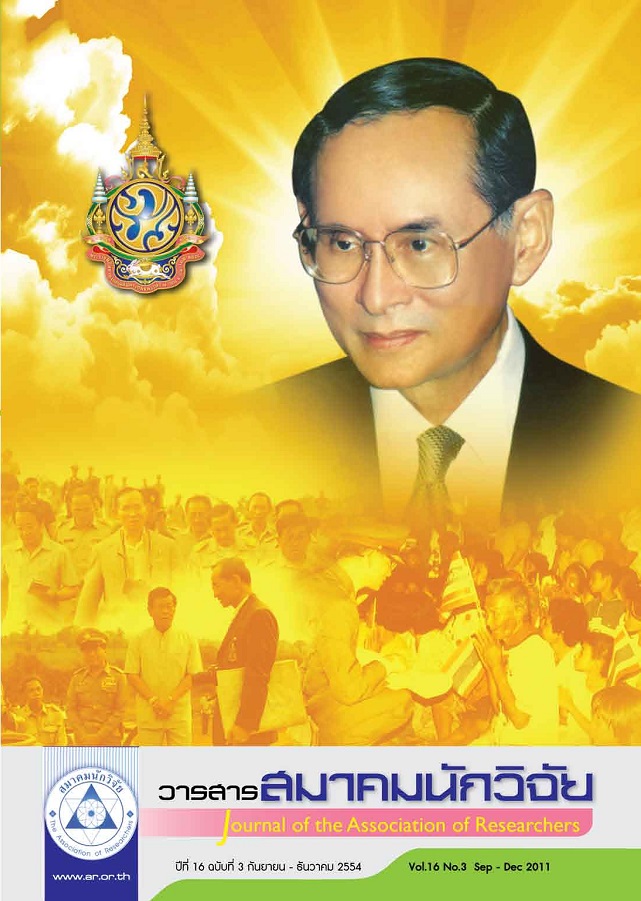the administration model for effectiveness of the sub-district administrative organiZations at the lower northern provincial region group 1 in thailand
Main Article Content
Abstract
The purpose of this study was fourfold: Firstly, to study the states and problems for administrating of the Sub-district Administrative Organizations (SAO) at the Lower Northern Provincial Group 1 (LNPG1); Secondly, to compare the viewpoints of the SAOs’ administrators, members of SAO council, officials, and citizens, toward the administration with age-group, educational level, position status, and working experience; Thirdly, to examine the crucial administration factors toward the SAOs’ organizational effectiveness at the LNPG1, and Fourthly, to develop and to present the effective model for administrating the SAOs at the LNPG1. Data from the questionnaires, drawn from 1,362 participants concerned (98.41% of random sampling) were analyzed by statistics: frequency, percentage, means, standard deviation, one-sample t-test, MANOVA with Post.Hoc. by Scheffe’s method, and Stepwise-Wald binary logistic regression analysis. Research results were as follows: 1) States and problems for administrating the SAOs at the LNPG1 as a whole, were at a high level, with .05 significant level, compared to the established criteria (more than 60%), 5 categories (out of 8 categories as significances: importance given to customers; human resources, measurement, analysis and knowledge management; transparency, and citizen participation. Likewise, the result for administrating the SAOs was at a moderate level, with 60% for effectiveness or success; 2) The SAOs’ participants with education below the B.A. level group had an average viewpoint higher than that of the B.A. level and higher. In addition, the SAOs participants with working experience less than 1 year and above 10 years had an average viewpoint in the category of leading organization higher than participants with working experience 1-10 years at the .05 level of significance; 3) There were 13 crucial variables (out of 98 variables) having influence over the SAOs’ administration. All 13 variables could predict the effectiveness of the SAOs as a whole by 65.40%, and at the .05 significant level. Moreover, from a group of the SAOs’ participants who evaluated the effectiveness of the SAOs below 60 %, all 13 variables could predict 83.40 % of effectiveness. It was also found that the variable on “the SAOs ’ operating in accordance with the needs of citizens” was the best predictor, predicting at 60.40%, and significant at the .05 level; and 4) The SAOs’ effective model for managerial administration, created and developed by the researcher, consisted of 15 strategic issues, and 28 projects (or activities) for practicing with strategic planning within 3 years.
Article Details
บทความที่ปรากฏในวารสารนี้ เป็นความรับผิดชอบของผู้เขียน ซึ่งสมาคมนักวิจัยไม่จำเป็นต้องเห็นด้วยเสมอไป การนำเสนอผลงานวิจัยและบทความในวารสารนี้ไปเผยแพร่สามารถกระทำได้ โดยระบุแหล่งอ้างอิงจาก "วารสารสมาคมนักวิจัย"


